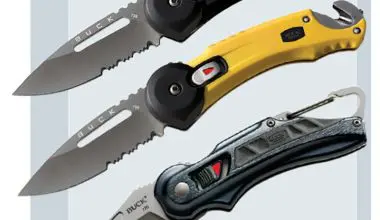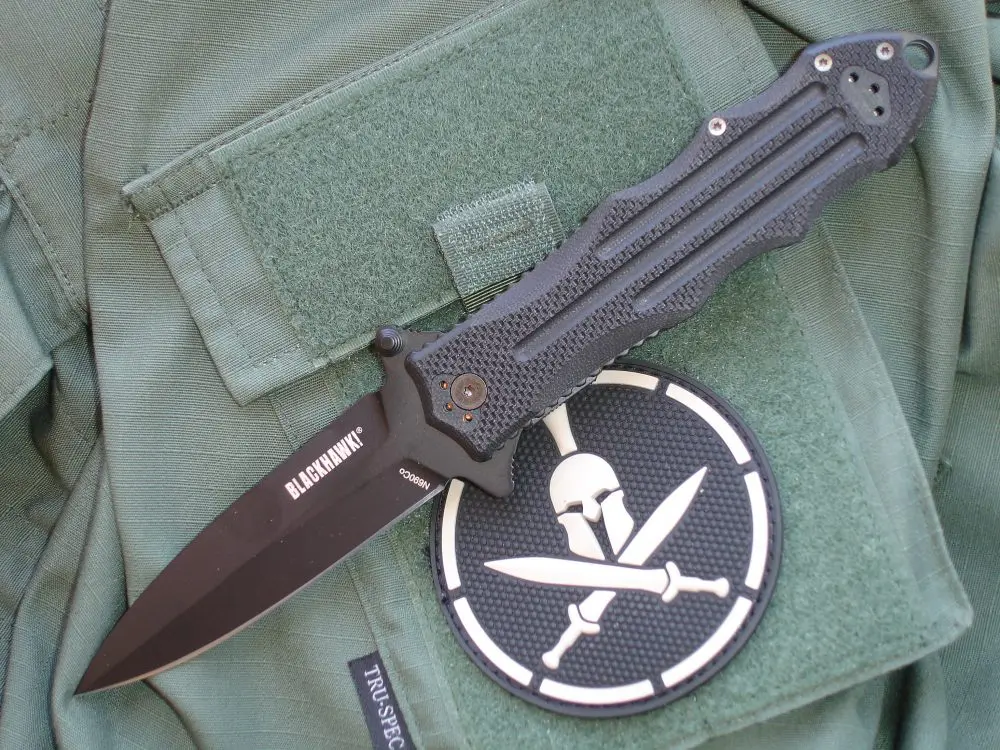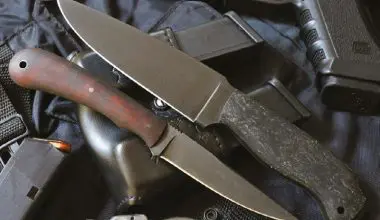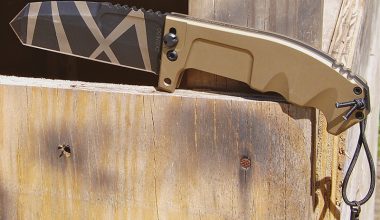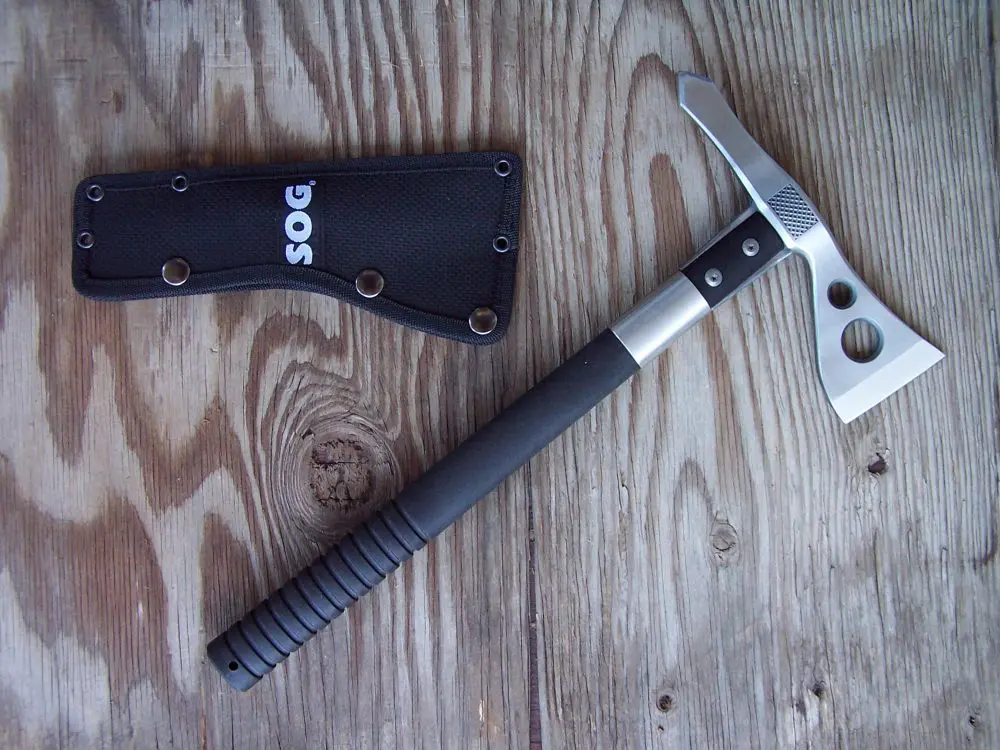DO we really need another knife on the market? While we apparently don’t demand honesty in our politicians, one thing we do demand is plenty of choice in the marketplace.
I first learned of Smith & Sons Knives at the Blade Show in Atlanta. Amidst tables hawking knives with five-figure price tags, handle materials from prehistoric animals, and steels hand forged by virgins and quenched in unicorn tears, there was a refreshingly honest and simple company focusing more on craftsmanship and less on hype. I’m a substance-over-form type of guy and I like knives that were made to work, so I recently acquired their A/T model.
The A/T is on the tactical end of the spectrum, while some of Smith’s other offerings seem geared to more traditional outdoor pursuits. The first thing I noticed when picking up the A/T is that this is one big hunk of hand-ground D2 steel. Blade stock is 3/16 inch, and it maintains that width from the back of the handle all the way to about an inch from the end of the tip. It is definitely stout, particularly considering the height of the blade is just over an inch at its tallest point. Total length is 8-5/8 inches, with the blade comprising 4-3/8 inches of that. I couldn’t find a published weight, but mine weighed in at 7.2 ounces.
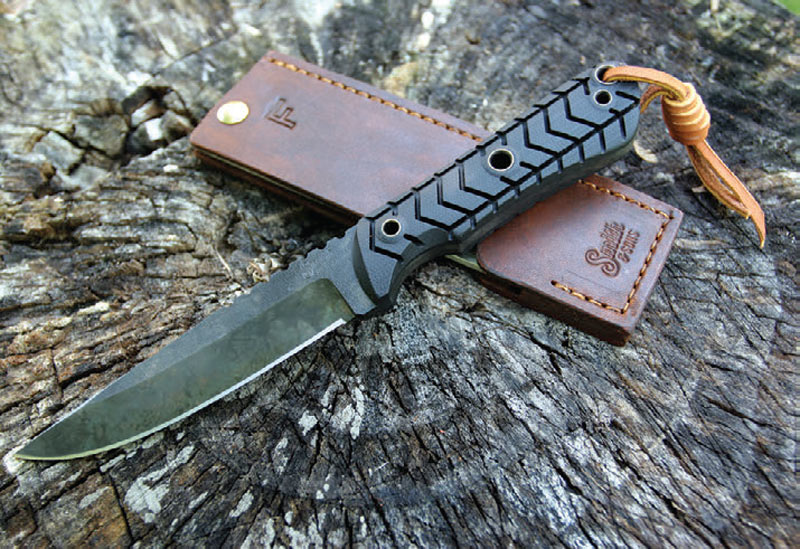
Handles are G-10, and thick ones at that with 1/4-inch thickness on each side, giving the handle an overall width of approximately 5/8 inch. For those who care about such things, it has a hollow grind. There is also a lanyard hole, filled with a traditional leather strap— an aesthetically pleasing blend of new tactical and old traditional.
The design encourages a stable, usable grip under adverse conditions, including water, blood, and mud. The textured G-10 handles have very deeply cut grooves, and the jimping on the top of the blade is some of the widest and most pronounced I have seen. Even with gloves on, there’s no doubt it’s there if you want to use it. Handle lines are fairly traditional and allow for good purchase in either a forward or reverse grip.
Unlike the $300+ knives of some other brands, this one comes with a sheath. It is a Kydex number with the rivet holes along both sides so popular today for affixing to various belts, packs and vests. The sheath holds the knife snugly with positive retention, perfectly adequate for the majority of people, though I could stand it being a little harder to get in and out.
One improvement I recommend is a drain hole in the bottom of the sheath. Using the knife along the South Carolina coast, some sand got into the sheath and was not as easily cleaned out as it could have been were there a drain hole. Others must have felt the same way, because I was told that the more recent model comes with a drain hole. The A/T retails for $325 with the handmade Kydex sheath. I opted for the Kydex/ Tek-Lok attachment model for an additional $25.
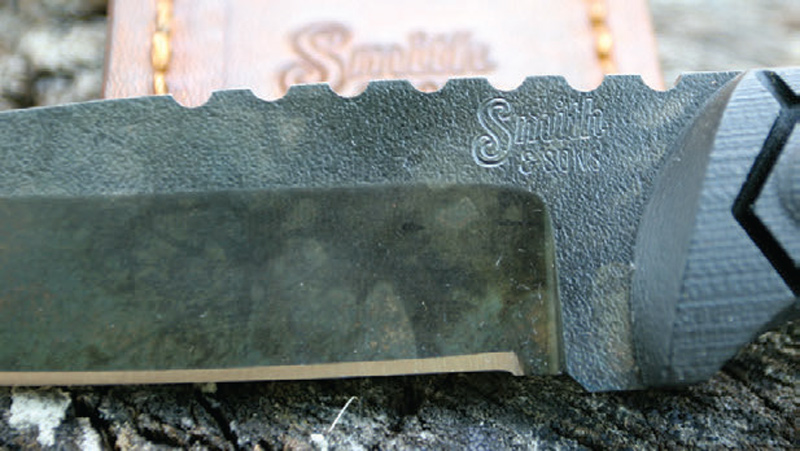
Enough about the specifications. How did it perform?
As you can imagine given the thickness, the A/T can take a beating. I batoned a lot of wood and it handled that with no problem. Its thickness even helped split the wood more quickly. It can easily help you assemble a deadfall trap, bow drill or improvised shelter.
Big deal. Most well-built knives, and even some folding knives, can baton wood. For this price, I need a little more to satisfy me. So let’s get straight to the point (no pun intended). What kind of abuse can it take?
Combined with the A/T’s thickness and grip design, the sharp point led me to believe it needs to be tested above your standard rope slicing and tin-can punching so prevalent in knife-rag articles today. With that in mind, I headed to the local junkyard to give this thing an actual workout.
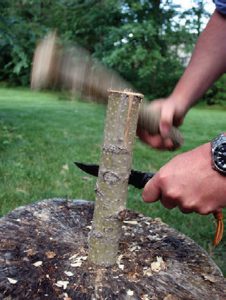
Before the bags of hate mail start arriving, I realize that a knife is a cutting tool and not to be used as a hammer, chisel, railroad spike, piton, or the Jaws Of Life®. However, readers want to know what a knife’s limit is without having to break their own knife. To that end, I push knives to their breaking point and beyond to bring the reader this information at the mere cost of one issue of S.W.A.T.—not a $300 knife.
If you can’t abide knife abuse, don’t read further. It gets pretty ugly.
Men quickly become boys when given free rein in a junkyard, and I’m no exception. Within minutes, a buddy and I were stabbing everything in sight. We took turns thrusting the A/T into several different cars. My suspicions were confirmed when the A/T penetrated the roof of one car after another. Not just the newer, cheaper metal, but some old-school American stuff as well.
I’ve learned the hard way to be careful stabbing hard material if the knife doesn’t have a hilt to prevent the hand from slipping down the blade. Initially I used welder’s gloves to protect my hand from sharp metal edges or broken glass and to offer some protection from the edge were my hand to slip forward onto the blade. But the gloves proved unnecessary and I removed them for most of the tests. Due to the incredible grip design of the A/T, my hand maintained a solid purchase on the knife even during repeated thrusts into metal.
We moved on to actually cutting a hole in the roof of a car. The knife was first thrust through the roof and then batoned with a framing hammer down several lengths of the roof, allowing a hole to be peeled back. What surprised me was the shape retention of the overall point and edge. Of course the edge was severely dulled from this abuse (and make no mistake, this is abuse), but the large number of chinks I was expecting in the edge weren’t there.
Sadly, most of my reviews end with a broken knife, and this one is no exception. I was eventually able to break the knife by hammering it deep into metal and then striking it repeatedly on the spine until it cracked just in front of the handle where the edge begins. This really is abuse and has no business being included in any legitimate knife evaluation, but it became my obsession to see how far this knife can be pushed.
Even after it broke, the blade itself was completely intact and the edge entirely serviceable, albeit missing a handle. In a survival situation, the edge could still be used for traditional cutting and skinning chores.
In my opinion, good knives fall into one of three categories: collectible knives, usable knives, and knives you can count on when it matters.
The Smith & Sons A/T falls squarely in the last category, and I have no hesitation recommending it.
